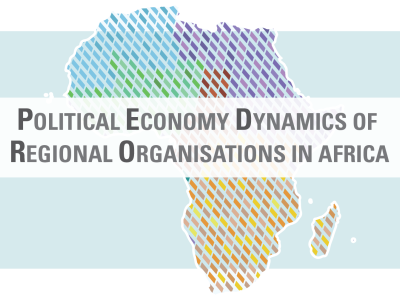
From pact to policy to practice? Reflections on the EU’s 'New Pact for the Mediterranean'
At ECDPM we talk a lot about moving from policy to practice. So, the launch of the New Pact for the Mediterranean begs the question: how does one move from a pact to policy and practice? And will the pact be able to better shape cooperation across the Mediterranean than past efforts?
Time to try again
In her mission letter to Vice-President Šuica, President Ursula von der Leyen announced the idea of a “New Pact for the Mediterranean”, a framework meant to offer a new approach to relations between the EU and its southern partners. According to Stefano Sannino (DG MENA Director-General), speaking to think tanks this week, the Pact is intended to be a “co-owned, bottom-up process based on concrete actions”. It introduces flexibility to work “with those ready” to move forward among the EU27 and 10 MENA partners, with possible engagement from Gulf countries, Turkey, and Mauritania - ‘our neighbours’ neighbours’.
The Pact comes thirty years after the Barcelona Process (1995) and four years after the New Agenda for the Mediterranean (2021) - both cited in the Communication as helping raise billions of euros of investment - but which many criticise for delivering underwhelming impact.
The new Pact arguably takes a more pragmatic approach, building on three pillars:
- People, including skills training and mobility
- Sustainable and integrated economies
- Security, resilience and migration management.
In her speech, Commissioner Šuica underlined that all three pillars are interconnected, with ideas such as the University of the Mediterranean, under the first part of broader endeavours to provide skills for the new economy. The second pillar will focus on trade investment and jobs, primarily in renewable energy. As she said, there is no prosperity without security, which can encourage investment, jobs and thus fewer reasons to migrate. DG MENA officials emphasise that it “is not meant to solve political problems in the region,” but rather to help stabilise the political landscape through economic opportunity and regional cooperation. Indeed, the initial mission letter talked of ‘supporting good governance’ while the communication cites bringing about “a paradigm shift”.
While the EU has always seen the Mediterranean as a source of instability, today it is seen as a source of renewable energy and one where the EU is losing ground to other partner countries.
Beyond marking 30 years since Barcelona, the Pact responds to ongoing underlying shifts in relations around the Mediterranean, and in particular to a shift in the EU’s interests in the region - especially in the field of energy. Much as the Mediterranean seems like a natural zone for cooperation, given similar challenges as a climate hotspot, sharing a common sea and offering complementarities, thus presenting opportunities for mutually beneficial trade and cooperation, a key driver for the New Pact relates to the EU’s own energy needs. As such, while the EU has always seen the Mediterranean as a source of instability (with some exceptions), today it is seen as a source of renewable energy and one where the EU is losing ground to other partner countries.
The New Pact is therefore framed to align the EU’s external engagement with energy security, green industrial policy, and supply-chain resilience - framed as a win-win. North African partners increasingly seek investment in energy while also calling for greater consultation on EU policies like CBAM, which may have significant effects on their trade. A big part of the aim is then to increase investment - including private but also blended finance for renewable energy, clean technology (e.g. the Trans-Med initiative), and start-up ecosystems that can link to employment creation for women and youth. Investment platforms are being mentioned to develop project pipelines for strategic investments with macro-financial assistance and reform support, in coordination with DG INTPA and linked to national plans such as Italy’s Mattei Plan.
Same questions, different answers?
While the context has changed and the partners’ underlying needs have shifted since the Barcelona process was launched, the new pact nonetheless raises questions - will this pact somehow manage to overcome the challenges faced by past attempts?
As Comm. Šuica highlighted, no conditionalities are attached: the Pact is “a pact, not a policy loan” – and therefore seeks to be a voluntary framework for cooperation, not an exchange of migration control for investments. At least in ambition, that makes it different to preceding agendas or policies.
Read our analysis on regional integration and aligning interestsIn particular, the “co-ownership” principle could mark a departure from earlier top-down frameworks if indeed it can be made to work. As past analysis on regional integration and governance has shown, durable cooperation depends on aligning interests – not only between the EU and its partners, but also among those partners, including governments, firms and civil society.
Even if the goal of being a ‘partnership of equals’ seems ambitious between 27 economically integrated and (somewhat) politically united EU states and a collection of more than ten individual states, the shift in needs, particularly those of the EU, may indeed create a more level playing field. The EU needs access to green energy, and the ‘southern’ Mediterranean offers many opportunities.
Further, the Pact’s proposed flexibility – starting with those ready – may allow coalitions of the willing to move faster than waiting for the full group. That pragmatism could help build trust and demonstrate value in specific areas that can then extend to other partners, groupings or sectors, avoiding the blockages of awaiting full regional agreement.
From pact to practice and impact
The pact, then, is simply a new political framing to reflect changing relations in a changing context. To achieve its goals this will mean translating co-ownership into co-investment, leveraging EU financing instruments to mobilise private capital while giving southern partners a genuine role in project selection and governance. The ambition to embed education and skills as economic multipliers, not social afterthoughts through the “Mediterranean University” and vocational training networks could further nurture cross-border talent pipelines linked to regional industries—especially renewables, sustainable tourism, and the blue economy - but need to address the challenges of the past.
This makes governance a key consideration. Commissioner Suica mentioned the role of the Union for the Mediterranean, which despite current leadership challenges, offers a unique platform for all Mediterranean governments. Although such regional organisations are only as strong as their member states will allow, greater coordination challenges may come between Southern Mediterranean countries - with tensions between countries blocking intra-regional cooperation in North Africa - and between EU institutions - the New Pact will depend very much on coherence across DGs beyond MENA—such as INTPA, TRADE, GROW, ECFIN, and CLIMA, than between the EU and its partners.
For the pact to lead to demonstrable change in the relationship between Southern and Northern Mediterranean may depend on specific actions. The Trans-Med initiative seems to offer a potentially transformative investment strategy and platform, while bilateral discussions with the likes of Egypt will also show how the pact can be put into practice.
If these pieces align, the Pact could evolve from a statement of intent into an operational framework for shared prosperity and resilience, where Europe and its southern neighbours jointly define priorities, invest in skills and clean industries, and prepare together for shared risks. If it can do that, the Pact might indeed turn policy into practice.
The views are those of the author and not necessarily those of ECDPM.







